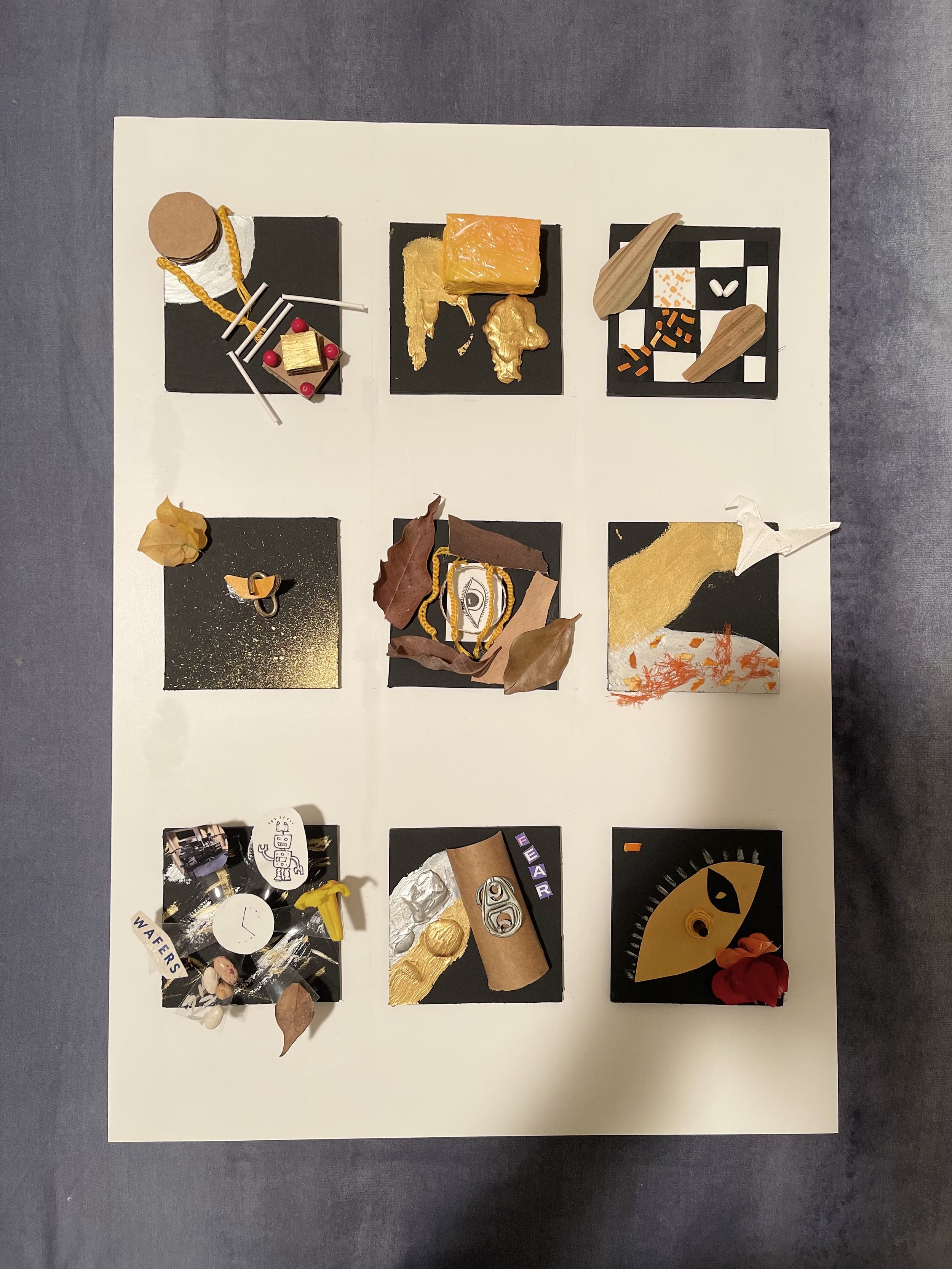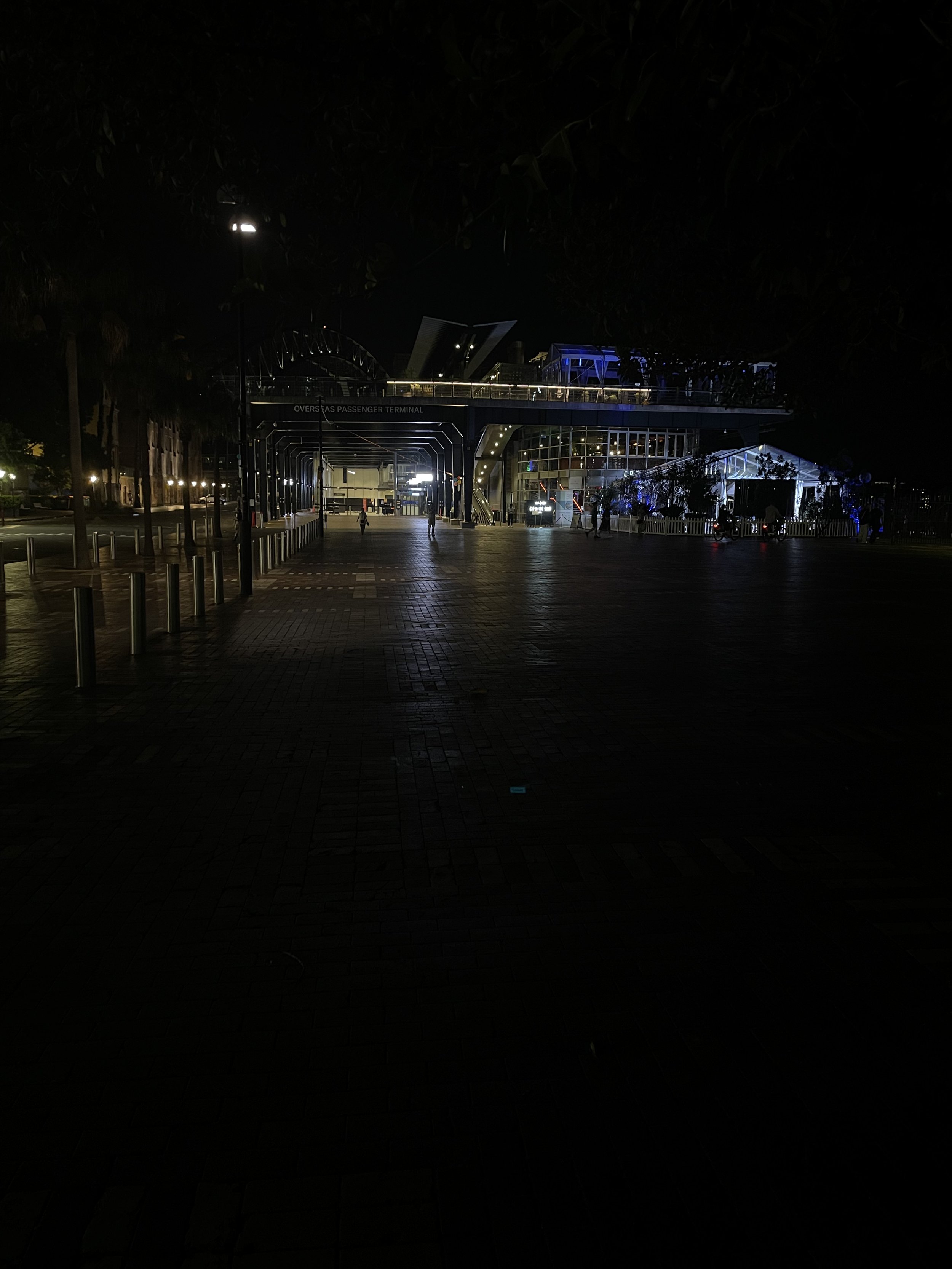The Awakening
Tasks Undertaken
Narrative Coding, Mixed media crafts, Prototyping, Poster and Graphic Design
Background:
This individual project enabled an understanding of understanding narrative codes from movie title sequences, translating interpretations into communicative ideas and using those as an inspiration to create a physical space for the Vivid Sydney Festival in Sydney Australia.
Title Sequence: OFFF Milano (2017)
The title sequence “OFFF Milano (2017)” was chosen for conducting narrative code analysis. The sequence had multiple seemingly abstract structures with limited colour variations, making it very interesting to analyse and break down. I broke down the title sequence using narrative codes, forming my own interpretations of different snapshots and making associations to my knowledge and experiences. One such example is given below.
(Snapshot of title sequence OFFF Milano (2017) - https://www.youtube.com/watch?v=kdMr4IfRHU8 - (Ravi Arun. (2025) Assessment 2. Used for Design Concepts and Communication - DDES9010, University of New South Wales)
Narrative Code - Perspective:
The snapshot represents a scene taken at eye-level perspective. This seems to provide an immersive effect for the viewer with an element of curiosity. It almost feels like the viewer is inside a larger object.
Association:
1. Nest
2. Cocoon
4. Obstacle Race
Mixed Media Tiles
Using 9 narrative codes from the analysis stage, I created 9 mixed media tiles depicting the meaning that I derived from the analysis. While each tile caters to an individual narrative code and a corresponding perception of what was being communicated, an attempt has been made to make them a cohesive unit, communicating one message. At the same time, the tiles have been constructed in an abstract manner, allowing the viewer to derive their own meaning from the tiles. The 9 narrative codes that were used are:
Layering
Texture
Repetition
Contrast
Perspective
Symbolism
Metaphor
Character
Color
Location Choice and Moodboard
(Vertical and horizontal images of the mixed media tiles - (Ravi Arun. (2025) Assessment 2. Created for Design Concepts and Communication - DDES9010, University of New South Wales)
Vivid Sydney is held in areas within Sydney CBD (Central Business District). After visiting and documenting over 8 different locations for a potential installation I chose the space at the Overseas Passenger Terminal at The Rocks, Sydney. The space was large and had a high footfall which is integral to people’s interaction with the potential physical space. I chose the location as it would cater to enough people who would want to interact with the space as well as those who would like to be spectators. The location is a spot surrounded by restaurants which are at full capacity at night, aligning with the timings of Vivid Sydney (6pm to 11pm).
Based on the chosen location and mixed media tiles, a mood board was created to guide the design of the physical space.
(Snapshots of the intended location photographed using phone
- (Ravi Arun. (2025) Assessment 2. Created for Design Concepts and Communication
- DDES9010, University of New South Wales)
(Mood board to guide design of physical space and poster
- (Ravi Arun. (2025) Assessment 2. Created for Design Concepts and Communication
- DDES9010, University of New South Wales)
Physical Space Prototype and Digital Rendering on Vivid Sydney Poster
A prototypical model of the base of the physical space was made using using cardboard, tissue paper and glue. The designed physical installation represented a tunnel that people could walk through to experience and understand the message being conveyed. Following the theme of Vivid, the physical space seeks to convey the present harmful interactions between humans, technology and nature and an ideal scenario (signifying a dream) of what the world would look like if the harmful interactions were mitigated. The concept has been developed primarily from the metaphor and symbolism tiles derived from the original chosen title sequence.
(Images of the base component from the prototype of the physical installation - (Ravi Arun. (2025) Assessment 2. Created for Design Concepts and Communication - DDES9010, University of New South Wales)
Considering that this space was being designed for Vivid Sydney, a poster was designed to convey details related to the installation such as a brief description of what the installation is, the key features, target audience, location and time, how it works and how it appeals to the five senses of the human body. The digital representation of the installation can be seen on the poster, giving viewers a realistic view of how it would look in person.
(Images of the final posters designed to provide information about the installation - (Ravi Arun. (2025) Assessment 2. Created for Design Concepts and Communication - DDES9010, University of New South Wales)
Recognising the importance of sound based communication in physical spaces and interactions, I composed a foundational track that seeks to highlight different emotions and moods that the installation will bring about in people while they walk through it. It was composed using GarageBand with multiple electronic instruments such as the keyboard, violin and orchestra. The sound track can be accessed through the link given below:
Following is the link to the audio track:
https://drive.google.com/file/d/1TZc_75JuhHKMngA7_eBCG6bKOZRbBJdp/view?usp=sharing - (Ravi Arun. (2025) Assessment 2. Created for Design Concepts and Communication - DDES9010, University of New South Wales)
Problem Statement:
How could ideas derived from narrative coding and mixed media be used to design a physical space for Vivid Sydney.
Tools
Adobe Photoshop, Adobe Illustrator, Adobe InDesign, Craft
Mentor
Matthew Wooler
Project Type
Individual (Course Work)
Year
September 2025












